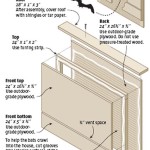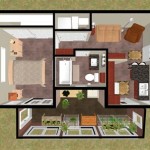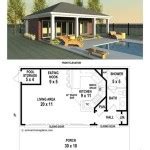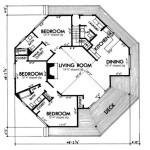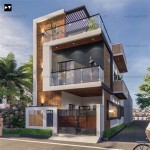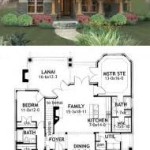House plans for 5-bedroom houses are detailed blueprints that provide a comprehensive layout and design for constructing a house with five bedrooms. These plans typically include floor plans, elevations, sections, and details that outline the dimensions, structural elements, and aesthetic features of the house.
5-bedroom house plans are popular among families who require ample space and privacy for their members. They are also suitable for individuals who anticipate frequent guests or require dedicated areas for hobbies, work, or extended family accommodations.
In the following sections, we will delve into the key considerations, available options, and benefits of house plans for 5-bedroom houses, providing valuable insights to assist you in finding the ideal plan for your dream home.
When selecting house plans for a 5-bedroom house, it is essential to consider the following key points:
- Number of stories
- Layout and flow
- Room sizes and proportions
- Exterior design
- Energy efficiency
- Storage space
- Future expansion
- Site orientation
- Budget
- Personal preferences
These factors will help ensure that your 5-bedroom house plan meets your specific needs and requirements.
Number of stories
The number of stories in a 5-bedroom house plan is a crucial decision that impacts the overall design, space utilization, and cost of the house. Here are the key considerations for each option:
Single-story house plans
Single-story house plans offer all living spaces on one level, eliminating the need for stairs. This design is ideal for individuals who prefer convenience, accessibility, and reduced maintenance. Single-story houses are also suitable for elderly individuals or those with mobility concerns. However, they tend to have a larger footprint and may require a larger lot size compared to multi-story houses.
Two-story house plans
Two-story house plans provide more vertical space, allowing for a larger house on a smaller lot. They often feature bedrooms on the upper level, providing privacy and separation from common living areas. Two-story houses can offer scenic views from the upper level and may have lower construction costs per square foot compared to single-story houses. However, they require stairs, which may be a consideration for some individuals.
Multi-story house plans
Multi-story house plans, typically three or more stories high, offer the most vertical space and are suitable for narrow or sloped lots. They provide ample space for bedrooms, bathrooms, and other functional areas. Multi-story houses often incorporate features such as elevators or dumbwaiters for convenience and accessibility. However, they may have higher construction costs and ongoing maintenance expenses compared to single-story or two-story houses.
Ultimately, the choice between a single-story, two-story, or multi-story house plan depends on individual preferences, lifestyle, lot size, and budget. It is advisable to carefully consider the advantages and disadvantages of each option before making a decision.
Layout and flow
The layout and flow of a 5-bedroom house plan play a crucial role in creating a comfortable, functional, and aesthetically pleasing living environment. Key considerations include:
- Open vs. closed floor plan: Open floor plans feature interconnected living spaces with minimal walls or barriers, allowing for a sense of spaciousness and easy flow between areas. Closed floor plans, on the other hand, have more defined rooms with walls and doors, providing privacy and separation between spaces.
- Traffic flow: The layout should ensure smooth and efficient movement throughout the house, avoiding bottlenecks or awkward transitions. Common areas, such as the kitchen, living room, and dining room, should be easily accessible from each other and from the main entrance.
- Natural light: Windows and skylights should be strategically placed to maximize natural light and create a bright and inviting atmosphere. The orientation of the house on the lot should also be considered to take advantage of sunlight during different times of the day.
- Privacy: The layout should provide privacy for bedrooms and bathrooms, particularly the master suite. Bedrooms should be located away from high-traffic areas and have minimal noise transference from other parts of the house.
A well-designed layout and flow will not only enhance the functionality and comfort of your 5-bedroom house but also contribute to its overall aesthetic appeal.
Room sizes and proportions
The room sizes and proportions in a 5-bedroom house plan are crucial for ensuring comfort, functionality, and aesthetic appeal. Here are key considerations:
Master suite
The master suite, which typically includes a bedroom, bathroom, and walk-in closet, is a private sanctuary within the house. The bedroom should be spacious enough to accommodate a king-size bed, nightstands, and other furniture. The bathroom should be well-appointed with a large shower, soaking tub, double vanity, and ample storage. The walk-in closet should be designed to maximize storage capacity and organization.
Secondary bedrooms
Secondary bedrooms should be large enough to comfortably fit a queen-size bed, desk, and dresser. They should also have adequate closet space. If possible, each secondary bedroom should have its own bathroom or easy access to a shared bathroom.
Living room
The living room should be the heart of the home, providing a comfortable and inviting space for family gatherings and entertaining guests. It should be large enough to accommodate a seating area, entertainment center, and other furniture. Good natural light and a fireplace are desirable features.
Kitchen
The kitchen is a central hub for meal preparation and family activities. It should be designed to maximize functionality and efficiency, with ample counter space, storage cabinets, and modern appliances. A kitchen island or breakfast bar can provide additional seating and work space.
Exterior design
Architectural style
The architectural style of a 5-bedroom house plan significantly influences its exterior appearance. Popular architectural styles for 5-bedroom houses include traditional, modern, farmhouse, craftsman, and Mediterranean. Each style has its own unique characteristics, such as rooflines, siding materials, window styles, and decorative elements. Choosing an architectural style that aligns with your personal preferences and the surrounding neighborhood will enhance the overall aesthetic appeal of your home.
Rooflines
The roofline of a 5-bedroom house plan can vary greatly, from simple gable roofs to complex hip and valley roofs. Gable roofs are the most common type, featuring two sloping sides that meet at a ridge. Hip roofs have four sloping sides that meet at a central point, providing a more durable and visually interesting option. Valley roofs are formed by the intersection of multiple roof planes, creating a unique and dramatic look. The choice of roofline depends on factors such as architectural style, climate, and personal preference.
Siding materials
The exterior siding of a 5-bedroom house plan can be made from a variety of materials, including vinyl, fiber cement, wood, and stone. Vinyl siding is a popular choice due to its low maintenance, affordability, and wide range of colors and textures. Fiber cement siding offers durability, resistance to pests and moisture, and a natural wood-like appearance. Wood siding provides a classic and timeless look, but requires regular maintenance and painting. Stone siding is a luxurious and durable option, but also the most expensive.
Window styles
The window styles in a 5-bedroom house plan can greatly impact its exterior design. Common window styles include double-hung, casement, awning, and bay windows. Double-hung windows have two sashes that slide vertically, providing ventilation and a classic look. Casement windows are hinged on one side and open outward, offering excellent ventilation and a modern aesthetic. Awning windows are hinged at the top and open outward, providing shade and ventilation. Bay windows project outward from the wall, creating a small alcove and allowing for panoramic views.
Energy efficiency
In today’s environmentally conscious world, energy efficiency is a crucial consideration for any new home construction project. 5-bedroom house plans can incorporate various energy-efficient features to minimize energy consumption, reduce utility bills, and contribute to a greener living environment.
- Insulation: Proper insulation is essential for maintaining a comfortable indoor temperature and reducing heat loss during winter and heat gain during summer. 5-bedroom house plans should specify high-quality insulation materials for walls, ceilings, and floors, ensuring optimal thermal performance.
- Windows and doors: Energy-efficient windows and doors are designed to minimize heat transfer and air leakage. Look for windows with double or triple glazing, low-emissivity (low-E) coatings, and Energy Star certification. Similarly, exterior doors should be well-sealed and insulated to prevent air infiltration.
- Appliances: Energy-efficient appliances, such as refrigerators, dishwashers, and washing machines, consume less energy and can significantly reduce household utility bills. 5-bedroom house plans should consider incorporating Energy Star-rated appliances into the design.
- Lighting: Energy-efficient lighting can make a substantial impact on energy consumption. 5-bedroom house plans should prioritize LED lighting fixtures, which are highly efficient and long-lasting. Natural light can also be maximized through the strategic placement of windows and skylights.
By incorporating these energy-efficient features into 5-bedroom house plans, homeowners can not only reduce their environmental footprint but also enjoy lower energy costs and a more comfortable living environment.
Storage space
Built-in storage
Built-in storage solutions are a great way to maximize space and keep your 5-bedroom house organized. Consider incorporating built-in shelves and cabinets into the design, particularly in areas such as the living room, bedrooms, and hallways. These built-ins can provide ample storage for books, dcor, clothing, and other belongings, while also enhancing the overall aesthetic of the home.
Walk-in closets
Walk-in closets are a highly desirable feature in 5-bedroom house plans. They offer a spacious and organized storage solution for clothing, shoes, and accessories. Walk-in closets can be customized to include various shelving, drawers, and hanging rods, ensuring that everything has a designated place. Consider incorporating walk-in closets into the master suite and other bedrooms to provide ample storage space for all residents.
Attic and basement storage
If your 5-bedroom house plan includes an attic or basement, these spaces can be utilized for additional storage. Attic storage can be accessed via a pull-down ladder or stairs, and can be used to store seasonal items, dcor, or other belongings that are not frequently used. Similarly, a basement can provide ample storage space for bulky items, such as furniture, appliances, or sporting equipment.
Garage storage
The garage is another often-overlooked area for storage in 5-bedroom house plans. By incorporating built-in shelves, cabinets, and overhead storage systems, the garage can be transformed into a functional and organized space. Garage storage can be used to store tools, gardening equipment, sporting goods, and other items that need to be easily accessible but not necessarily kept inside the house.
Future expansion
Adding a room or suite
If you anticipate the need for additional space in the future, consider incorporating flexibility into your 5-bedroom house plan to accommodate future expansion. This may involve designing the house with a dedicated space that can be easily converted into an additional bedroom, guest room, or home office. Alternatively, you could plan for a future addition, such as a sunroom or family room, by ensuring that the foundation and roof structure can support the expansion.
Expanding the kitchen or living area
Another common area for future expansion is the kitchen or living area. By designing your 5-bedroom house plan with a spacious layout and flexible walls, you can easily expand these areas in the future to accommodate a growing family or changing needs. This may involve removing a non-load-bearing wall to create an open floor plan or adding an extension to the existing space.
Finishing the basement or attic
If your 5-bedroom house plan includes an unfinished basement or attic, these spaces can provide significant potential for future expansion. By finishing these areas, you can create additional bedrooms, bathrooms, or living spaces without the need for a major addition. Consider incorporating plumbing and electrical rough-ins during the initial construction to facilitate future finishing.
Building a detached structure
If your property allows, building a detached structure, such as a guest house, pool house, or workshop, can provide additional space and functionality without altering the main house. Detached structures can be designed to complement the main house’s architectural style and offer flexibility for future expansion.
Site orientation
Site orientation plays a crucial role in the design and functionality of any house, including a 5-bedroom house. It refers to the positioning of the house on the building lot in relation to the sun, prevailing winds, and surrounding views.
Proper site orientation can optimize natural light, reduce energy consumption, enhance privacy, and maximize outdoor living spaces. When selecting a house plan for a 5-bedroom house, consider the following site orientation factors:
Sunlight
Natural light is essential for creating a bright and inviting living environment. Orient the house to take advantage of sunlight during the day, particularly in living areas, bedrooms, and outdoor spaces. In the northern hemisphere, south-facing orientations are ideal for maximizing sunlight, while in the southern hemisphere, north-facing orientations are preferable. Large windows and skylights can further enhance natural light.
Wind
Prevailing winds can affect the comfort and energy efficiency of a house. Position the house to minimize exposure to strong winds, which can cause drafts and increase heating and cooling costs. Consider using windbreaks, such as trees or shrubs, to redirect wind away from the house. Cross-ventilation, achieved by placing windows on opposite sides of the house, can promote natural airflow and reduce the need for air conditioning.
Views
If the building lot offers scenic views, orient the house to capture them. Position the main living areas, such as the living room, dining room, and master bedroom, to take advantage of the views. Outdoor spaces, such as patios and balconies, can also be strategically placed to maximize the enjoyment of the surrounding landscape.
Privacy
Consider the privacy of the house when determining its orientation. Position the house to minimize visibility from neighboring properties and public areas. Use landscaping, such as trees and shrubs, to create privacy screens and define outdoor living spaces. Windows and outdoor areas should be placed to ensure privacy while still allowing for natural light and ventilation.
By carefully considering site orientation when selecting a house plan for a 5-bedroom house, you can create a comfortable, energy-efficient, and visually appealing home that meets your specific needs and preferences.
Budget
Budget is a crucial factor to consider when selecting house plans for a 5-bedroom house. The cost of building a house can vary significantly depending on several factors, including the size and complexity of the house, the materials used, and the location of the construction. It is important to establish a realistic budget before finalizing house plans to avoid any financial surprises during the construction process.
- Size of the house:
The square footage of the house is one of the primary determinants of its cost. Larger houses generally require more materials, labor, and land, leading to higher construction costs. Carefully consider the size of the house you need to accommodate your family’s lifestyle and budget.
- Complexity of the design:
The complexity of the house design can also significantly impact its cost. Houses with intricate architectural details, such as multiple rooflines, bay windows, and elaborate moldings, require more skilled labor and specialized materials, resulting in higher construction costs compared to simpler designs.
- Materials used:
The choice of materials used in the construction of the house can also affect its cost. Higher quality materials, such as natural stone, hardwood flooring, and energy-efficient appliances, tend to be more expensive than standard materials. However, these materials can also enhance the durability, comfort, and overall value of the house.
- Location of the construction:
The location of the construction can influence the cost of the house due to factors such as land prices, labor costs, and building codes. Urban areas typically have higher land and labor costs compared to rural areas. Additionally, building in areas with strict building codes may require additional expenses for materials and construction methods that meet the code requirements.
It is advisable to consult with a reputable builder or contractor to obtain an accurate estimate of the construction costs based on your specific house plans and location. A realistic budget will help you make informed decisions and avoid any financial constraints during the construction process.
Personal preferences
Personal preferences play a significant role in selecting house plans for a 5-bedroom house. Each family has unique needs, tastes, and aspirations that should be reflected in the design of their home. Here are several key personal preferences to consider when choosing house plans:
- Architectural style:
The architectural style of the house should align with the personal preferences of the homeowners. Popular architectural styles for 5-bedroom houses include traditional, modern, farmhouse, craftsman, and Mediterranean. Each style has its own distinctive characteristics, such as rooflines, siding materials, window styles, and decorative elements. Choosing an architectural style that resonates with the homeowners’ taste and complements the surrounding neighborhood will enhance the overall aesthetic appeal of the house.
- Layout and flow:
The layout and flow of the house should accommodate the homeowners’ lifestyle and preferences. Some families prefer open floor plans with interconnected living spaces, while others may prefer more traditional layouts with defined rooms. The flow of the house should ensure smooth and efficient movement throughout the home, avoiding bottlenecks or awkward transitions. The placement of rooms, such as the kitchen, living room, and bedrooms, should also align with the homeowners’ daily routines and social interactions.
- Room sizes and proportions:
The size and proportions of each room should meet the specific needs and preferences of the homeowners. The master suite, for example, should be spacious enough to accommodate a king-size bed, nightstands, and other furniture, as well as a well-appointed bathroom with a large shower, soaking tub, and ample storage. Secondary bedrooms should be large enough to comfortably fit a queen-size bed, desk, and dresser, and should have adequate closet space. The living room should be the heart of the home, providing a comfortable and inviting space for family gatherings and entertaining guests.
- Outdoor living spaces:
Outdoor living spaces, such as patios, balconies, and decks, can significantly enhance the functionality and enjoyment of a 5-bedroom house. Homeowners who value outdoor living may prefer house plans that incorporate spacious outdoor areas with features such as built-in seating, fire pits, and outdoor kitchens. The orientation of the outdoor spaces should also be considered to maximize privacy, natural light, and scenic views.
By carefully considering their personal preferences and incorporating them into the house plans, homeowners can create a 5-bedroom house that truly reflects their unique style, meets their functional needs, and provides a comfortable and inviting living environment for years to come.









Related Posts


